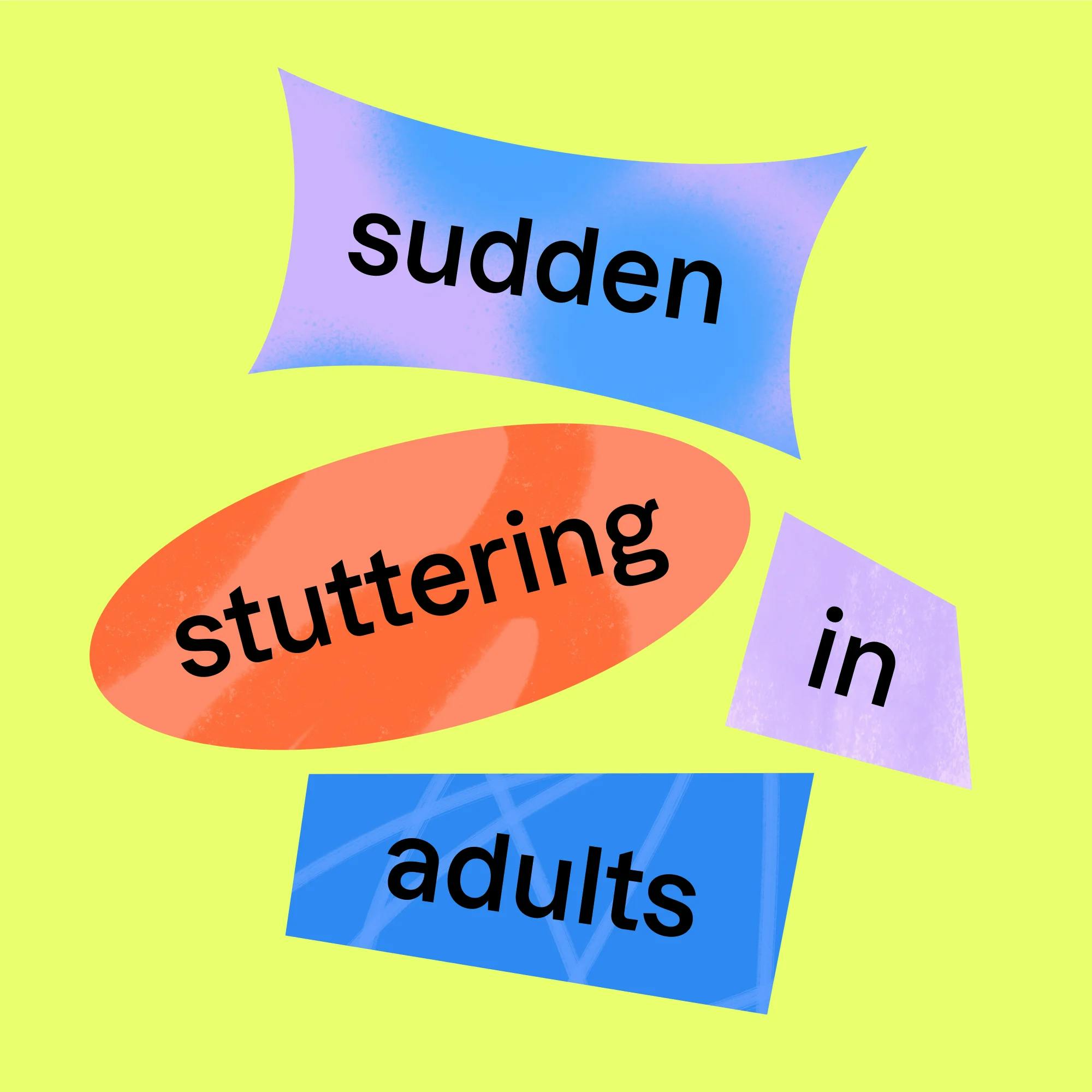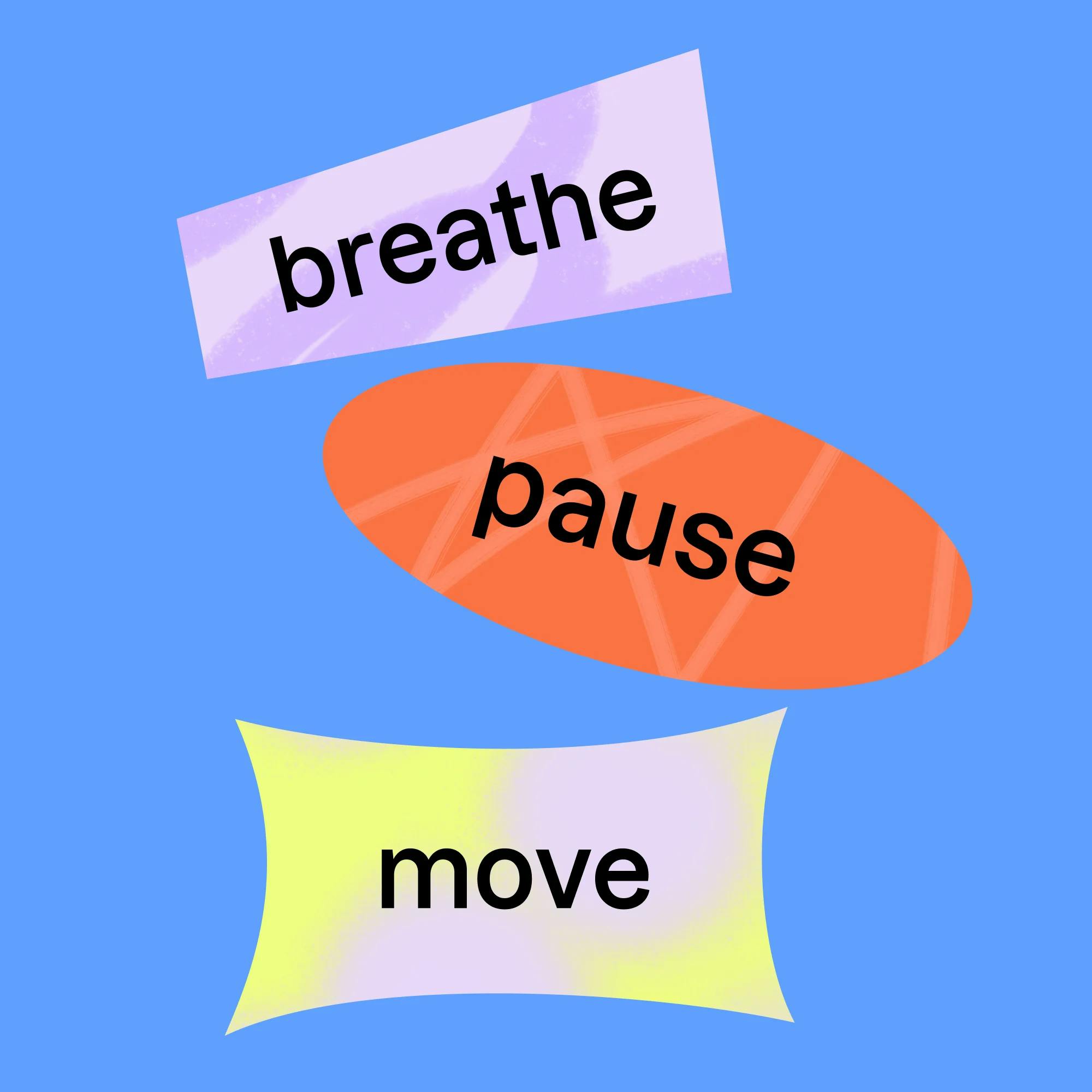Have you ever been talking–then suddenly began stuttering? All of a sudden, your speech doesn’t come out as smoothly as usual. If this sounds familiar and you’re wondering why you’re stuttering out of nowhere, you’re in good company.
Speech therapists are experts at treating stuttering and other problems with speech fluency, or smoothness. Learn what a sudden stutter is, the causes of adult stuttering, and what to do if you begin stuttering.
Support for people who stutter
Speech therapy can build your confidence and help you speak more freely. Find the right speech therapist for the support you need.
 Get started
Get startedWhat causes sudden stuttering in adults?
Many young children stutter while they’re developing speech and language skills. When stuttering starts in childhood and continues as the person gets older, it’s referred to as childhood onset stuttering.
When stuttering starts later in life, it’s called adult onset stuttering, or acquired stuttering. This type of stuttering isn’t as common. There are several possible causes for stuttering in adults:
Neurogenic stuttering. This is the most common form of stuttering found in adults. Neurogenic stuttering is often caused by a traumatic incident, such as a cerebrovascular accident (stroke) or traumatic brain injury (TBI). After an incident like this, a stutter may be present for a few hours or days, or it may last longer. In at least 50% of cases, neurogenic stuttering coexists with other speech and language concerns, such as aphasia (loss of speech) or dysarthria (a motor-speech disorder).
Stuttering from childhood reoccurring. If you stuttered as a child, your stuttering can come and go, and it can reappear in adulthood. If you don’t have a record or memory of your stuttering in early childhood, it may seem like a sudden onset.
Stress- or trauma-related stuttering. This is referred to as “psychogenic stuttering.” Psychogenic stuttering usually occurs after an emotionally traumatic event. In these cases, it’s important to rule out other factors that could be impacting speech, such as genetic predispositions to stuttering, prescription medications, or an underlying neurological condition.
Pharmacogenic stuttering. Some medications can cause stuttering. Drugs such as the bronchodilator theophylline, selective serotonin reuptake inhibitors (SSRIs), and tricyclic antidepressants can cause stuttering-like disfluencies in adults as a side effect.
If you are suddenly stuttering, it’s important to talk to your doctor if you have concerns about medication side effects. You should also talk with your doctor if you have a history of brain injury, neurodegenerative disease, or surgeries.


What does stuttering sound like in adults?
We all have moments when we don’t speak smoothly. We might add in some filler words while talking, such as “like” or “um.” We might pause, lose our train of thought, make revisions to our speech, or repeat a word or phrase. These are called disfluencies, and they happen to everyone. We are human beings with complex thoughts, feelings, and emotions. No one is 100% fluent all the time (unless they’re a robot!).
Stuttering, however, is more than a disfluency. Stuttering, also known as stammering, may cause tension or negative feelings or thoughts associated with speaking. People who stutter may also try to avoid situations or words where they stutter.
Ada's story
After sudden stuttering took over Ada's speech, online speech therapy helped her regain her confidence and say what she wanted to say.
 Read Ada's story
Read Ada's storySome signs of stuttering in speech include:
Repetitions. Repetitions are when a person repeats the first sound or syllable of a word at least three times more than is needed. It may sound like this: “C-c-c-ould you h-h-h-elp me?”
Prolongations. Prolongations are when a person holds out a sound for too long, to where the speech sounds abnormal. It may sound like: “Wwwwwwhere did you go?”
Blocks. Blocks are when a person is unable to move their mouth and use their voice to continue speaking. No voice or sound comes out during a block. The block may occur at the level of the throat (vocal cords) or the mouth (articulators). An example of a block might be: “Look…..over there!”
You can hear some examples of the different types of stuttering and what they sound like in this video.
People who stutter may also have secondary behaviors. These are body or facial movements that occur with stuttering, including:
Physical tension in the face, neck, or anywhere else in the body
Facial grimacing
Eye blinking
Movement of another part of the body, such as the arm, leg, or foot
Avoiding eye contact or turning away from the conversation partner
Changes in vocal pitch or volume

What should you do if a stutter suddenly starts?
If you suddenly start stuttering, struggling to get your words out, and feeling a lot of tension around speaking, contact a speech-language pathologist, also known as a speech therapist. Speech therapists are educated, trained, and licensed to assess a person’s speech and formally diagnose or rule out a stutter.
It’s important to know that not every person who stutters wants to reduce their stutter. Speech therapy for people who stutter should be holistic and personalized, supporting each person’s unique needs. Some people want to learn fluency techniques to manage their stutter. Others benefit from learning to speak more freely and advocate for themselves. A speech therapist will evaluate your speech, talk with you to learn about your goals, and create an individualized plan to help you find your voice!
How does speech therapy help sudden stuttering in adults?
It’s important to understand that stuttering is not something that needs to be “cured.” Stuttering is a different way of speaking. We can think about stuttering in terms of verbal diversity, not simply a condition that needs to be “fixed.”
Speech therapists know firsthand that stuttering is a misunderstood condition. Many people have been taught to avoid stuttering at all costs. They may steer clear of certain social situations, not order what they want at a restaurant, or avoid an entire career because it requires a high amount of speaking. These are just a few examples of how stuttering can affect a person’s life.


At Expressable, we want every person to feel confident and empowered to say what they want to, when they want to. Stuttering therapy often includes techniques to help the person become more confident in speaking, even when stuttering occurs. Through speech therapy, adults who stutter can learn to:
Use techniques to increase fluency, or ease of speech
Use techniques to reduce tension while speaking
Reduce the negative feelings associated with stuttering
Retrain the brain to associate positive feelings with speaking
Decrease avoidance behaviors
When you believe that what you have to say matters, you can advocate for yourself in all sorts of situations as a person who stutters.
Get matched with a speech therapist today
If you’re concerned about sudden stuttering, we’re here to help. We’ll match you with a licensed speech therapist who can evaluate you and guide you on the best next steps. Find a speech therapist here!
Frequently asked questions
What causes sudden stuttering in adults?
The most common cause is neurogenic stuttering, which is often related to a stroke or brain injury. Adult stuttering can also be caused by stress, trauma, or medication side effects.
What are symptoms of stuttering in adults?
People who stutter may feel tension or have negative feelings around speaking. They may try to avoid situations or words where they stutter. They may repeat the first sound or syllable of a word, prolong a sound for too long, or be unable to move their mouth and use their voice to continue speaking. If you start stuttering all of a sudden, contact a speech therapist.
What should I do if I suddenly start stuttering?
Schedule an evaluation with a speech therapist. At Expressable, we provide stuttering therapy that’s individualized to you, whether you want to speak more smoothly, build confidence, or learn to advocate for yourself as a person who stutters. Click here to get matched with a speech therapist who specializes in adult stuttering.
How Expressable Can Help
Concerned your child isn't reaching age-expected milestones? Looking for communication support from a professional? Expressable is a national online speech therapy practice serving children and adults. We treat all major areas of communication and feeding, offer flexible hours including evenings and weekends, and accept most major health insurance plans. We’re proud to have earned more than 3,000 5-star reviews from our clients (4.9/5 average).
Our therapy model is centered on parent and caregiver involvement. Research proves that empowering caregivers to participate in their loved one’s therapy leads to better outcomes. That’s why we combine live, 1-on-1 speech therapy with personalized education and home practice activities for faster progress.
Communication is more than words. It’s how we share how we feel and show who we are. We’re here to help you or your child do just that.

 Heather Gross, M.S., CCC-SLP
Heather Gross, M.S., CCC-SLP







